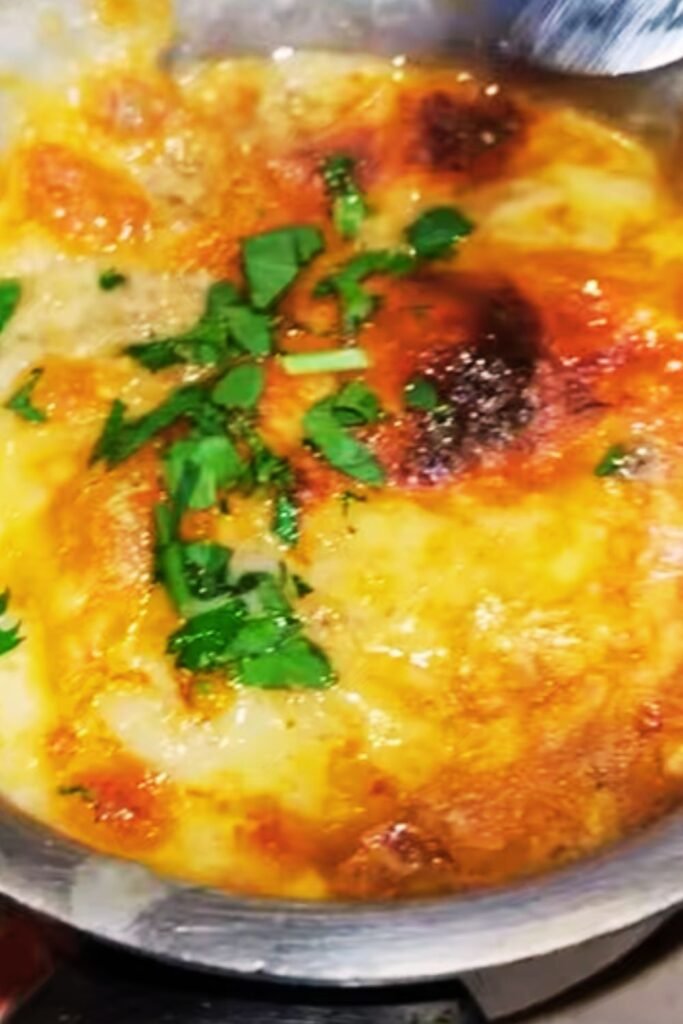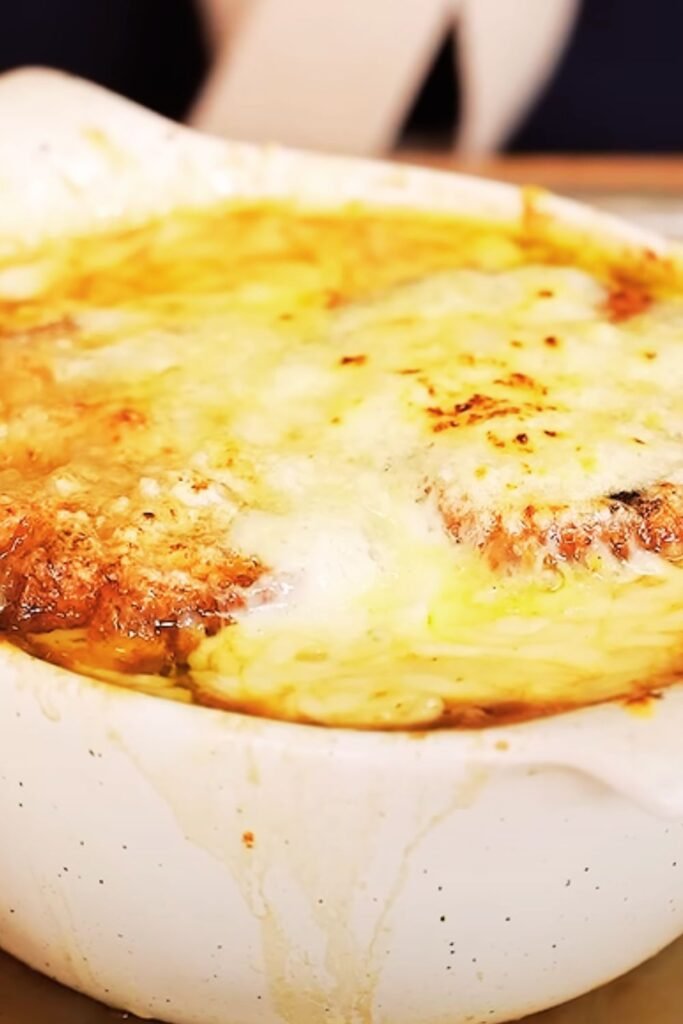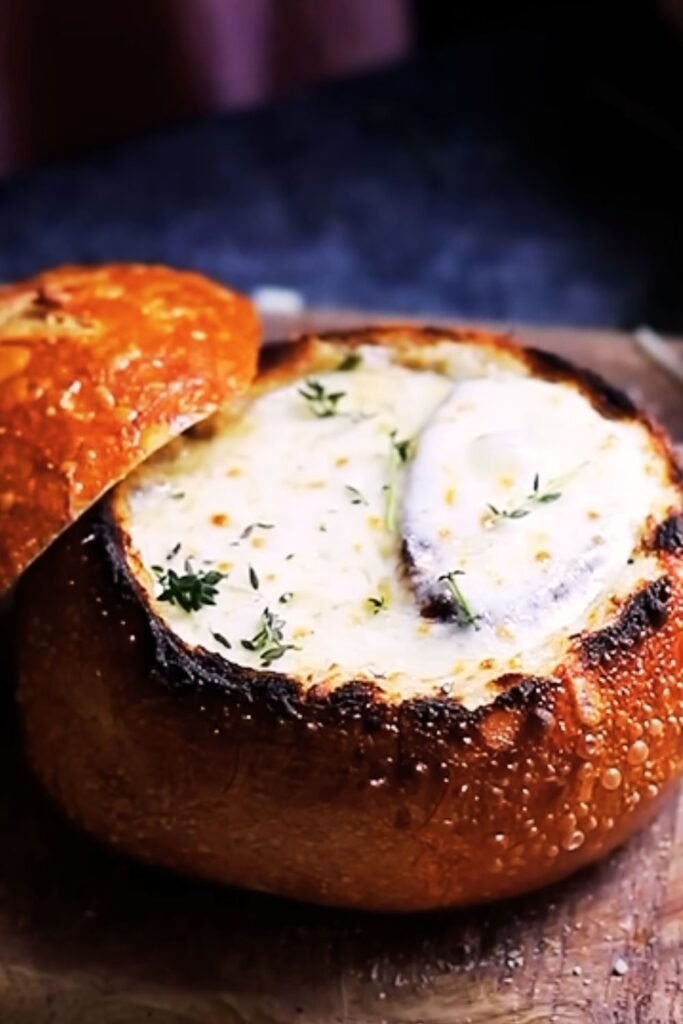There’s something magical about the aroma of caramelized onions filling your kitchen. When I first attempted to recreate that restaurant-quality French onion soup at home, I discovered it’s not just about throwing onions in a pot. This classic French dish requires patience, technique, and understanding of how flavors develop over time.
French onion soup represents the pinnacle of transforming humble ingredients into something extraordinary. The secret lies in the slow caramelization process that turns sharp, pungent onions into sweet, golden strands that form the soul of this beloved soup.
Understanding French Onion Soup Fundamentals
Classic French Onion Soup: A traditional soup consisting of caramelized onions in rich beef broth, topped with bread and melted cheese, then broiled until golden.
Caramelization: The process of slowly cooking onions until their natural sugars break down and develop complex, sweet flavors with deep golden-brown color.
Gratinée: The French term for the cheese-topped, broiled finish that creates the signature bubbling, golden crust.
Mirepoix Base: The foundational trio of onions, carrots, and celery that forms the aromatic base of many French soups and stews.
The beauty of French onion soup lies in its simplicity. With just a handful of quality ingredients and proper technique, I can create a dish that rivals any fine dining establishment. The key is understanding that this isn’t a quick weeknight meal – it’s a labor of love that rewards patience with incredible depth of flavor.
Essential Ingredients Breakdown
| Ingredient | Quantity | Purpose | Quality Tips |
|---|---|---|---|
| Yellow Onions | 6 large (3 lbs) | Primary flavor base | Choose firm, heavy onions without soft spots |
| Butter | 4 tablespoons | Fat for caramelization | Use unsalted European-style butter |
| Olive Oil | 2 tablespoons | Prevents butter burning | Extra virgin for best flavor |
| Beef Stock | 8 cups | Soup foundation | Homemade or high-quality store-bought |
| Dry White Wine | 1/2 cup | Deglazing and depth | Sauvignon Blanc or Pinot Grigio |
| Fresh Thyme | 2 teaspoons | Aromatic herb | Strip leaves from stems |
| Bay Leaves | 2 whole | Background flavor | Remove before serving |
| Salt | To taste | Seasoning | Sea salt or kosher salt |
| Black Pepper | 1/2 teaspoon | Spice balance | Freshly cracked |
| Gruyère Cheese | 2 cups grated | Topping | Aged Gruyère for best melting |
| French Bread | 6-8 slices | Crouton base | Day-old baguette works perfectly |
The ingredient quality makes an enormous difference in the final result. I’ve learned that using sweet yellow onions creates the best caramelization, while Spanish onions can work as a substitute. The cheese selection is crucial – authentic Gruyère provides the perfect nutty flavor and melting characteristics that make this soup special.

Step-by-Step Cooking Process
Preparing the Onions
I start by slicing the onions from pole to pole, creating half-moon shapes about 1/4-inch thick. This slicing method ensures even cooking and prevents the onions from falling apart during the long caramelization process. Consistency in slicing makes a significant difference in how evenly they cook.
The Caramelization Technique
Heat the butter and olive oil in a large, heavy-bottomed pot over medium heat. The combination prevents the butter from burning while adding rich flavor. Add the sliced onions with a pinch of salt, which helps draw out moisture and speeds the caramelization process.
The critical phase begins now. Cook the onions, stirring occasionally, for 45-60 minutes. I resist the urge to rush this process by increasing the heat. The onions should slowly transform from white to pale yellow, then golden, and finally to a deep amber color. They’ll reduce significantly in volume, concentrating their flavors.
During the first 15 minutes, the onions release their moisture and begin to soften. Around the 30-minute mark, they start developing color. The final 15-30 minutes are when the magic happens – the sugars caramelize, creating those complex, sweet flavors that define great French onion soup.
Building the Flavor Base
Once the onions reach that perfect caramelized state, I add the minced garlic and cook for another minute until fragrant. Then comes the deglazing step – adding the white wine to lift all those beautiful browned bits from the bottom of the pot. These fond particles contain concentrated flavors that enrich the entire soup.
Add the fresh thyme, bay leaves, and a generous grinding of black pepper. Pour in the beef stock gradually, scraping up any remaining fond. Bring the mixture to a boil, then reduce heat and simmer for 30 minutes, allowing all the flavors to meld together.
Perfecting the Gratinée Finish
| Component | Preparation Method | Tips for Success |
|---|---|---|
| Bread Croutons | Toast until golden | Slice 1-inch thick, brush with olive oil |
| Cheese Grating | Fresh grated Gruyère | Grate just before using for best melting |
| Oven Temperature | 450°F (230°C) | High heat for proper browning |
| Broiling Time | 2-3 minutes | Watch carefully to prevent burning |
| Bowl Selection | Oven-safe crocks | Individual serving bowls work best |

The gratinée process transforms good French onion soup into an extraordinary one. I ladle the hot soup into individual oven-safe crocks, filling them about 3/4 full. Float one or two pieces of toasted bread on top of each serving, then generously cover with grated Gruyère cheese.
Place the filled crocks on a sturdy baking sheet for easy handling. Bake in the preheated oven for 10-15 minutes until the cheese melts completely, then switch to broil for 2-3 minutes until the top becomes golden and bubbly. The cheese should form a beautiful crust that seals in the soup’s heat and aroma.
Advanced Techniques and Professional Tips
Stock Selection and Enhancement
The quality of your stock determines the soup’s depth of flavor. While homemade beef stock is ideal, I’ve found that combining good store-bought beef stock with a splash of mushroom broth adds extra umami richness. Some chefs add a tablespoon of tomato paste during the onion caramelization for additional depth and color.
Onion Variety Combinations
Experimenting with different onion types creates complexity. I sometimes use a mix of 4 yellow onions, 1 sweet onion, and 1 red onion for varied flavor notes. The red onion adds a subtle sharpness that complements the sweet caramelized base.
Make-Ahead Strategies
The soup base improves with time. I often make it a day ahead, stopping before adding the bread and cheese. The flavors develop overnight, creating an even richer taste. Reheat gently before proceeding with the gratinée finish.
Nutritional Information and Dietary Considerations
| Nutrient | Per Serving | Daily Value % |
|---|---|---|
| Calories | 385 | 19% |
| Protein | 18g | 36% |
| Carbohydrates | 28g | 9% |
| Fat | 22g | 28% |
| Fiber | 4g | 14% |
| Sodium | 1,240mg | 54% |
| Calcium | 320mg | 25% |
| Iron | 2.1mg | 12% |
French onion soup provides substantial nutrition despite its simple ingredients. The onions contribute fiber, vitamin C, and antioxidants. The cheese adds protein and calcium, while the bread provides energy-giving carbohydrates. For those watching sodium intake, using low-sodium stock and reducing added salt helps control levels.
Troubleshooting Common Issues
Onions Burning During Caramelization
This happens when the heat is too high or the onions aren’t stirred frequently enough. If you notice burning, reduce heat immediately and add a splash of water to deglaze the pot. The key is patience – proper caramelization cannot be rushed.
Soup Lacking Depth
Usually indicates insufficient caramelization time or poor-quality stock. The onions should be deeply golden-brown, almost mahogany colored, before adding liquid. Consider enhancing weak stock with mushroom broth or a splash of sherry.
Cheese Not Browning Properly
Ensure your oven is properly preheated and use the broiler for the final browning step. The cheese should be freshly grated – pre-shredded cheese often contains anti-caking agents that affect melting.

Serving Suggestions and Pairings
French onion soup works beautifully as either an elegant starter or a satisfying main course. When serving as a starter, smaller portions in 6-ounce crocks work perfectly. For a main course, use larger 12-ounce bowls and consider serving with a simple green salad dressed with vinaigrette.
The soup pairs wonderfully with crusty bread, charcuterie boards, or light salads featuring mixed greens, pears, and walnuts. For special occasions, I sometimes serve it alongside other French classics like coq au vin or beef bourguignon for a themed dinner party.
Storage and Reheating Guidelines
| Storage Method | Duration | Reheating Instructions |
|---|---|---|
| Refrigerator | 3-4 days | Gentle stovetop heating, stir frequently |
| Freezer (without bread/cheese) | 3 months | Thaw overnight, reheat slowly |
| Leftover Individual Portions | 2 days | Microwave on 50% power, covered |
The soup base freezes exceptionally well, making it perfect for meal prep. I often make double batches and freeze portions in individual containers. When ready to serve, thaw overnight in the refrigerator, then reheat gently while preparing fresh bread and cheese for the gratinée finish.
Seasonal Variations and Creative Adaptations
Spring Variation
Add fresh peas and asparagus tips during the final 10 minutes of simmering for a lighter, seasonal twist.
Mushroom Enhancement
Sauté sliced mushrooms separately and add them to the caramelized onions for extra earthiness.
Herb Modifications
Experiment with fresh rosemary or sage instead of thyme for different aromatic profiles.
Equipment Recommendations
| Equipment | Importance | Alternative Options |
|---|---|---|
| Heavy-bottomed Pot | Essential | Dutch oven or enameled cast iron |
| Oven-safe Crocks | Highly Recommended | Small casserole dishes |
| Sharp Knife | Essential | Mandoline for consistent slicing |
| Cheese Grater | Important | Food processor with grating disc |
| Ladle | Important | Large spoon works in pinch |
The right equipment makes this recipe significantly easier. A heavy-bottomed pot distributes heat evenly, preventing hot spots that can burn the onions. Individual oven-safe crocks create the authentic presentation and proper cheese-to-soup ratio.
Questions and Answers
Q: How do I know when the onions are properly caramelized?
The onions should be deep golden-brown, almost mahogany colored, and significantly reduced in volume. They’ll taste sweet rather than sharp, and the mixture should have a jammy consistency. This process typically takes 45-60 minutes of patient cooking.
Q: Can I substitute the Gruyère cheese with something else?
While Gruyère provides the authentic flavor and melting characteristics, you can substitute with Swiss cheese, Comté, or even a good sharp cheddar. Avoid mozzarella as it doesn’t provide the right flavor profile for this classic soup.
Q: What’s the best way to slice onions for this recipe?
Slice from pole to pole (from root end to stem end) in half-moon shapes about 1/4-inch thick. This method ensures even cooking and prevents the onions from breaking down too much during the long caramelization process.
Q: Can I make this soup vegetarian?
Absolutely! Replace the beef stock with a rich vegetable stock or mushroom broth. The key is using a flavorful stock that won’t make the soup taste thin or watery.
Q: How can I prevent the soup from being too salty?
Use low-sodium stock and taste before adding salt. Remember that the cheese adds saltiness too, so season conservatively. You can always add more salt, but you can’t take it away.
Q: Why does my soup lack the rich brown color I see in restaurants?
The color comes from properly caramelized onions and good beef stock. Don’t rush the caramelization process – those deep golden-brown onions are crucial for both flavor and color. Some recipes add a touch of kitchen bouquet or beef base for extra color.
Q: Can I prepare this soup in advance for entertaining?
Yes! Make the soup base up to two days ahead, stopping before adding the bread and cheese. Store covered in the refrigerator, then reheat gently before finishing with the gratinée topping.
Q: What should I do if my onions stick to the bottom of the pot?
Add a splash of water or stock to deglaze the pot, scraping up the browned bits. These fond particles add flavor, so don’t discard them. Lower the heat slightly to prevent further sticking.
This French onion soup recipe represents comfort food at its finest. The transformation of simple onions into something so deeply satisfying never fails to amaze me. With patience and attention to detail, you’ll create a soup that rivals the best French bistros. The key is embracing the slow cooking process and understanding that the best flavors develop with time and care.